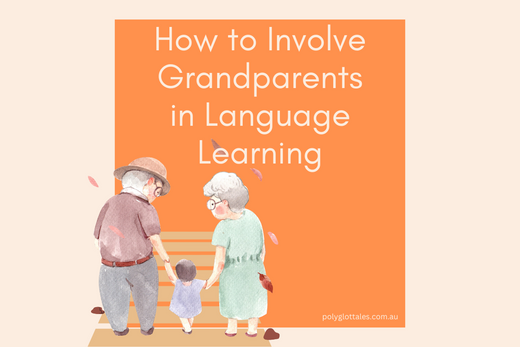Involving grandparents in your child's language-learning journey is a wonderful way to enrich the experience while strengthening family bonds. Grandparents often carry cultural and linguistic wisdom that can provide invaluable support for raising bilingual or multilingual children. Here are some unique and meaningful ways to include them in this rewarding process.
1. Storytelling and Oral Traditions
Grandparents often have a treasure trove of stories, songs, and proverbs in their native language. Encourage them to share these with your children. Storytelling not only improves language comprehension and vocabulary but also introduces children to cultural heritage and moral lessons.
Tips:
-
Create a "memory lane" session where grandparents share personal anecdotes or family histories in the target language.
-
Turn these stories into creative projects like illustrated books or recorded podcasts.
2. Hands-On Skills
Language comes alive when paired with hands-on activities. Grandparents can teach practical skills like gardening, knitting, or woodworking while incorporating the target language.
Ideas:
-
Use gardening time to label plants and tools in the target language.
-
Create simple how-to guides together, narrated or written in the language.
3. Cultural Immersion
Language and culture go hand in hand. Grandparents can introduce cultural elements through music, dance, or traditional practices, making language learning an immersive experience.
Suggestions:
-
Listen to traditional songs and discuss their meanings.
-
Learn cultural dances or rituals, explaining steps and traditions in the target language.
4. Interactive Games
Games can make language learning fun and collaborative. Grandparents can adapt traditional games to teach vocabulary or practice conversations.
Examples:
-
Create a homemade board game with language prompts at each step.
-
Play "I Spy" using target language descriptors.
5. Personalized Letters and Journals
Encourage grandparents to write letters or keep a shared journal with your child. This fosters writing and reading skills while building a special connection.
Ideas:
-
Exchange letters in the target language on specific topics or memories.
-
Use a bilingual journal to share daily highlights or reflections.
6. Cooking and Culinary Exploration
Cooking together is an excellent way to learn language and life skills. Grandparents can guide children through recipes while explaining ingredients and steps in the target language.
Tips:
-
Create a "recipe book" with the names and instructions written bilingually.
-
Discuss food origins and cultural significance while cooking.
7. Technology as a Bridge
For long-distance grandparents, technology can provide meaningful interactions. Regular virtual sessions ensure consistent language practice.
Suggestions:
-
Play digital word games or storytelling apps together.
-
Use video calls for "show and tell" activities where the child explains their day in the target language.
8. Collaborative Projects
Working on projects together fosters a sense of accomplishment and builds language skills naturally.
Ideas:
-
Create a family tree in the target language, complete with stories and pictures.
-
Work on a scrapbook documenting shared experiences, labeled in the target language.
Grandparents bring a wealth of knowledge, experience, and love to the table, making them ideal partners in your child’s language-learning journey. By involving them in meaningful and dynamic activities, you’ll not only enhance your child’s linguistic abilities but also create lasting memories and strengthen family connections.

